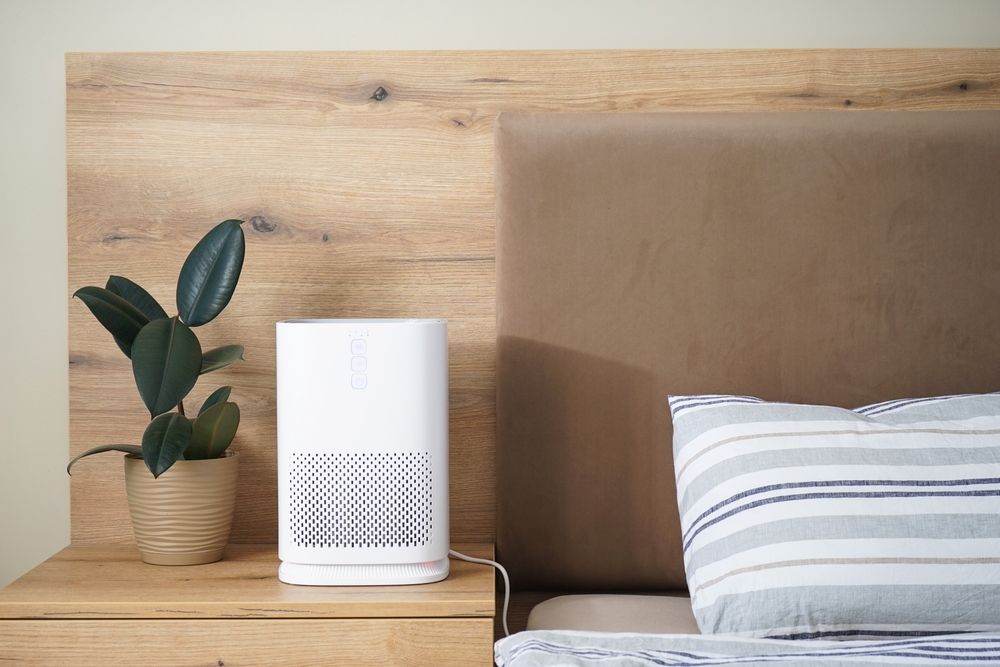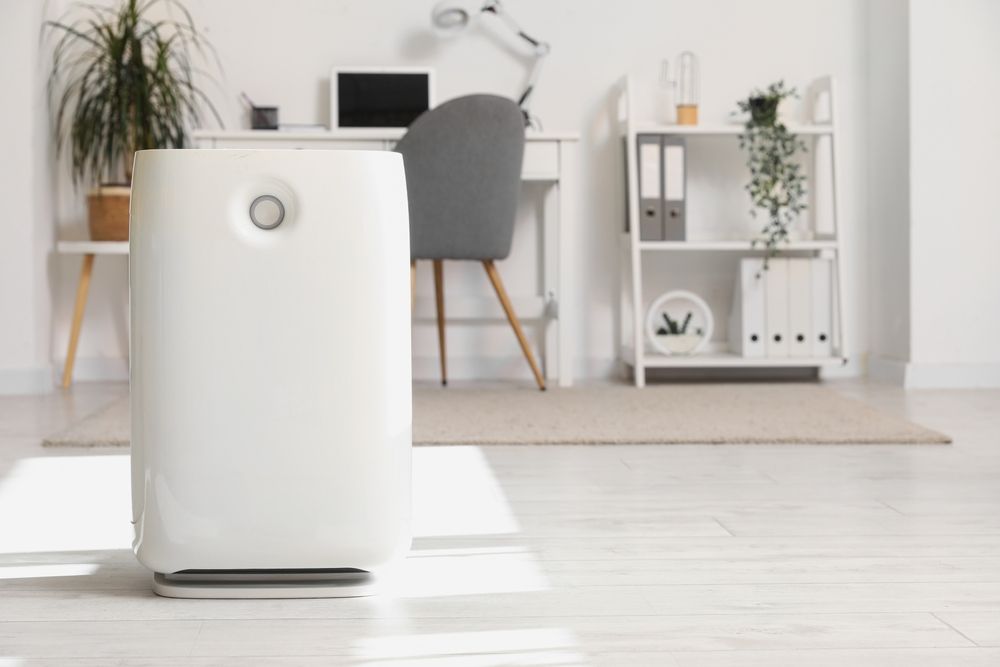Clean air is essential for good health, yet many of us spend most of our time indoors, breathing air that can be full of allergens, dust, pet dander, and even volatile organic compounds (VOCs) from household items. An effective air purifier can help tackle these concerns, offering relief for allergy sufferers and those who want better indoor air quality. However, with a range of features, sizes, and filter types on the market, selecting the right model can feel overwhelming. This guide outlines what to consider—from room size and filter technology to noise levels and maintenance—so you can choose an air purifier that suits your home and your health goals.
1. Understand Why You Want an Air Purifier
Why It Matters
People have varied reasons for purchasing an air purifier. Some may need relief from seasonal allergies or asthma, while others aim to reduce airborne germs or eliminate odors and chemicals. Clarifying your main concerns helps you prioritize features—like HEPA filters for allergens, activated carbon for odors, or UV lights for germs.
Potential Reasons
- Allergy or Asthma Relief: Removing pollen, dander, and dust can reduce the frequency of flare-ups and respiratory discomfort.
- Reducing Smoke or Odors: Whether from cooking, cigarettes, or wildfires, a purifier can capture odor-causing particles.
- General Air Quality Improvement: For those living in polluted urban areas or older homes, removing VOCs and fine particles can benefit overall well-being.
Takeaway
Identify your primary concerns—like allergens, odors, chemicals, or smoke—so you can focus on purifiers designed to handle these specific issues effectively.
2. Room Size and Air Changes per Hour (ACH)
Why It Matters
Air purifiers are often categorized by the maximum room size they can handle effectively. If you pick a device too small for your space, it won’t purify the air sufficiently. Conversely, an oversized or high-powered machine in a tiny area could be an overkill (and potentially louder or costlier).
Key Terms
- CADR (Clean Air Delivery Rate): Measures how quickly a purifier filters specific pollutants (like dust, pollen, smoke). Higher CADR numbers indicate faster cleaning for those particles.
- ACH (Air Changes per Hour): Tells you how many times the purifier can fully cycle and filter the air in a room each hour. For allergy sufferers, a higher ACH (e.g., 4–5) is recommended.
How to Decide
- Measure Your Room: Length × width to get square footage (or square meters). Compare with the purifier’s recommended coverage area.
- Look for Matching or Slightly Larger Capacity: Ensuring the purifier can handle your room size prevents underperformance. If you want faster or more thorough cleaning, consider a unit rated for a slightly bigger space than you have.
Takeaway
Choose a purifier that matches or exceeds your room’s dimensions. Check CADR and ACH if you require faster or deeper filtration—especially important for allergy-prone individuals.
3. Types of Air Filtration Technologies
Why It Matters
Not all air purifiers filter pollutants in the same way. Some rely on mechanical filters like HEPA, while others use activated carbon for odors or UV lights to neutralize germs. Knowing how each technology works helps you pick the right combination for your household needs.
Common Filter Types
- HEPA (High Efficiency Particulate Air)
- Effectiveness: Captures at least 99.97% of particles as small as 0.3 microns, including pollen, dust mites, mold spores, pet dander.
- Best For: Allergy or asthma sufferers; general particle removal.
- Activated Carbon Filter
- Effectiveness: Absorbs odors, smoke, VOCs (from paints or cleaning products).
- Best For: Those wanting odor control or chemical reduction.
- UV or Germicidal Lights
- Effectiveness: Targets bacteria, viruses, and other microbes by damaging their DNA/RNA, preventing reproduction.
- Caveat: Effectiveness depends on exposure time; a quick pass of air may limit its ability to kill germs.
- Ionizers/Negative Ion Generators
- Mechanism: Releases negative ions that attach to pollutants, causing them to settle or stick to surfaces.
- Considerations: May produce minimal ozone as a byproduct, which can irritate respiratory conditions if not carefully regulated.
- Ozone Generators (Generally Not Recommended)
- Mechanism: Produces ozone to neutralize odors and bacteria.
- Warning: Ozone can be harmful to the lungs, and high levels might violate health guidelines.
Takeaway
Focus on HEPA filters for removing fine particulates and activated carbon if you’re battling odors or chemicals. UV lights can add some microbial protection but aren’t essential for all. Approach ionizers or ozone-based solutions with caution, especially if you have respiratory issues.
4. Noise Levels and Placement
Why It Matters
Since air purifiers often run continuously, noise can become a nuisance—especially in bedrooms or shared living areas. Placement also impacts how effectively air circulates around the unit.
Considerations
- Noise Ratings: Measured in decibels (dB). Models might have multiple speed settings, so check noise output at various speeds.
- Fan Speeds: Running a purifier on high might be noisy, but if it’s sized correctly, you can keep it at a lower (quieter) setting most times.
- Ideal Placement: Position away from walls or furniture blocking intake/outflow. Ensure it’s in the room most commonly used, or in the bedroom if nighttime breathing ease is a priority.
Takeaway
A purifier that’s too loud might end up shut off or neglected. Striking a balance between power and acceptable noise ensures consistent usage and better air quality.

5. Maintenance and Filter Replacement Costs
Why It Matters
Buying an affordable purifier is only half the story—ongoing costs like replacement filters or cleaning cycles can add up. If you neglect filter changes, the machine’s performance plummets, undermining your investment.
Maintenance Factors
- Filter Lifespan: HEPA filters may last 6–12 months, while carbon filters could need replacing more frequently if there’s heavy smoke or odor presence.
- Reusable Filters: Some purifiers have washable pre-filters, prolonging the life of the main filter and cutting costs.
- Indicator Lights: Many machines have filter-change indicators, taking guesswork out of maintenance.
- Budget: Over time, higher filter replacement costs might overshadow an initially cheap purchase price.
Takeaway
Assess how often filters need changing and their prices. Sometimes, a more expensive purifier with cheaper or longer-lasting filters ends up being more economical long-term.
6. Additional Features and Smart Controls
Why It Matters
Extra features can improve the device’s user-friendliness or fine-tune its performance. Smart connectivity might offer convenience, while air quality sensors can automate speeds based on real-time pollution levels.
Nice-to-Have Features
- Auto Mode: Adjusts fan speed automatically when sensors detect pollutant spikes (like cooking odors or dust).
- Smart Integration: Some models connect to Wi-Fi, allowing you to control or monitor air quality via apps or voice assistants.
- Child Lock: Prevents kids (or pets) from tampering with settings.
- Timer/Scheduling: Useful if you only want intensive cleaning for certain hours.
Takeaway
While bells and whistles might increase cost, certain automations—like auto mode or smartphone control—can be worth it if they ease maintenance or ensure you’re always breathing cleaner air.
7. Budget vs. Quality
Why It Matters
As with most home appliances, you often get what you pay for. Extremely cheap units may cut corners on filter materials or produce less effective airflow. Higher-end purifiers usually come from established brands with proven technologies and reliable after-sales service.
Balancing Factors
- Look for Reputable Brands: Coway, Honeywell, Blueair, Dyson, and others have solid track records.
- Check Customer Reviews: Real-world feedback on noise levels, filter durability, and general performance.
- Warranty and Support: Good coverage and responsive customer service can indicate a company’s confidence in product longevity.
Takeaway
Set a realistic budget reflecting the size of the space you need to purify, plus desired features. Avoid ultra-cheap knockoffs if possible—reliability and performance might be compromised.
Selecting an air purifier entails more than randomly grabbing a box off the store shelf. By aligning your choice with the room’s size, the nature of pollutants you want to tackle, and your comfort preferences for noise and cost, you’ll find a model that seamlessly blends into your daily routine. Do your homework on filter types—especially HEPA and activated carbon, which cover the needs of most households dealing with allergens, smoke, or chemical smells. If noise is a concern, consider a machine with adjustable fan speeds and check decibel ratings. And remember, consistent maintenance—regular filter checks and replacements—keeps your purifier running at peak efficiency.
In an era where indoor air can be laden with everything from pollen to off-gassing chemicals, an air purifier can be an ally for better health and comfort. By choosing a reputable brand, verifying coverage area, and ensuring you’re comfortable with its noise level and maintenance demands, you’ll soon enjoy cleaner, fresher air in your living space. Whether you’re seeking allergy relief, odor control, or simply a healthier environment, a well-chosen air purifier can make a tangible difference for you and your household.





